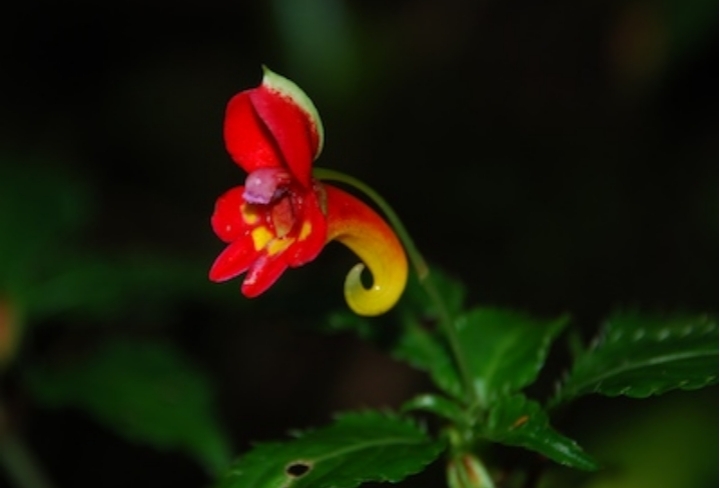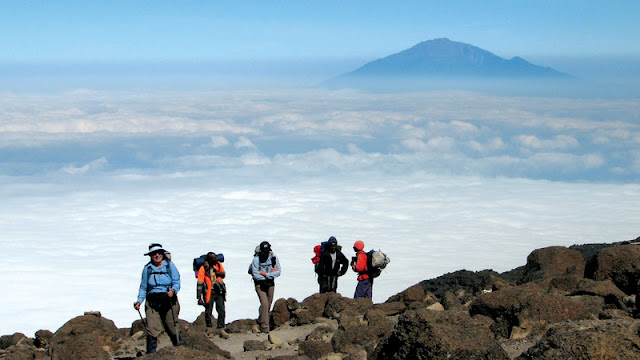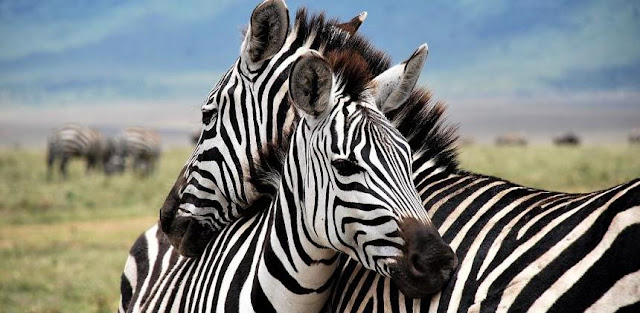FLOWERS OF KILIMANJARO

PLANTS OF MOUNT KILIMANJARO
What Plants and Trees Will I See on Mount Kilimanjaro?
Climbing through the five ecosystems of Mount Kilimanjaro rewards trekkers with a visual display of brilliant and unique plant life. There are flowers, plants and trees that you can find in no other part of the world but here. In this article, we show you some of the most striking, strange and common flora you will find on the mountain.
Everlasting Flowers
These flowers (Helichrysum meyeri- johannis) are very common on Kilimanjaro at elevations between 8,000 to 15,000 feet. It is the highest flowering plant on the mountain. They are known as everlasting flowers because they can bloom year round. This herbaceous perennial grows in clumps and can reach almost two feet tall.
The everlastings here have a yellowish-brown shade, with lemon-scented, pale white leaves. The leaf, stem and flower structure helps these plants survive the dry and frosty climate of the mountain.
Protea Kilimandscharica
Proteas were named after the Greek god Proteus, son of Poseidon, who had the ability to transform himself into many different shapes. These plants are known for their unusually shaped, delicate flowers.
Protea Kilimandscharica is found in the heath ecological zone on Mount Kilimanjaro. Also called sugarbushes, proteas are considered to be among the oldest of flowering plants.
Stoebe Kilimandscharica
Stoebe is a genus of African plants in the daisy family. The shrub has slender, wiry branches are covered with small leaves which are pressed to the stem. The flowerheads are located at the ends of the main shoots.
Stoebes are very hardy even invasive plants that are extremely hard to eradicate.
Red Hot PokerThe red hot poker, also know as a torch lily, is a showy and dramatic plant. A member of the liliaceae family, these drought and heat tolerant perennials flourish in the arid areas of Mount Kilimanjaro.
The flowers are a bright orange and yellow, resembling blazing hot metal that has been removed from a forge.
Lobelia Deckenii
Lobelia deckenii is a giant lobelia found only in the high mountains of East Africa, between 12,000 to 15,000 feet. The lobelia grow up to 10 feet high, have hollow stems, and tall flower-like spikes.
This plant has an incredible ability to combat cold. It closes its leaves at night to protect its central core. Leaf rosettes around the stem hold reservoirs of water that freeze into cubicles every night. This layer of ice further protects the core of the plant.
Hebenstretia
Dentata Hebenstretia Dentana is a long-flowering, summer perennial with masses of small white flowers. It’s known as the “white flowering plant.” This perennial forms bushy clumps up to two feet high.
Pure white flowers form along the top of the upright stems which branch at the base. The flowers from early summer to late autumn.
Fireball Lily
The vivid plant is also known as the African Blood Lily. The spectacular flowerhead is a large spherical mass can grow to a diameter of 9 inches wide and is made of up tp 200 tiny florets. Each plant will produce one flowerhead in a season.
The bulbs are toxic if ingested. The extract is used to make poison tip arrows and fishing poison.
Dendrosenecio Kilimanjari
Dendrosenecio Kilimanjari is a giant groundsel found only on Kilimanjaro. These unusual plants inhabit the middle altitudes on the Shira Plateau and around Barranco Camp Dendrosenecio Kilimanjari is slow growing but can reach a height of 20 feet high.
The groundsel has remarkable adaptations for living in the alpine environment. The old dead leaves fold over the trunk to give it insulation. The pith of the stem stores water. Special fluids are secreted that give it resilience to freezing. And like the Lobelia Deckenii its leaves close when it gets cold to keep the frosty air out.
Tussock
Tussock are a group of grass species that grow as singular plants in bunches, rather than forming a sod or lawn. They have long roots that may reach deep into the soil and can obtain more moisture than other grasses and plants during periods of drought.
The tussock grasses of Mount Kilimanjaro provide habitat and food for insects, birds, and small animals.
Old Man’s Beard
Usnea is a genus of pale grayish-green lichens that grow on bark or twigs of host trees. The shrub-like lichen hangs in clumps resembling white hair, thus its common name, old man’s beard. Lichen is not a plant, although it is often mistaken for one. It is a combination of algae and fungi that grow together symbiotically.
The plant body of usnea is used to make medicine for weight loss, pain, fever, and wound healing.
Climbing through the five ecosystems of Mount Kilimanjaro rewards trekkers with a visual display of brilliant and unique plant life. There are flowers, plants and trees that you can find in no other part of the world but here. In this article, we show you some of the most striking, strange and common flora you will find on the mountain.
Everlasting Flowers
These flowers (Helichrysum meyeri- johannis) are very common on Kilimanjaro at elevations between 8,000 to 15,000 feet. It is the highest flowering plant on the mountain. They are known as everlasting flowers because they can bloom year round. This herbaceous perennial grows in clumps and can reach almost two feet tall.
The everlastings here have a yellowish-brown shade, with lemon-scented, pale white leaves. The leaf, stem and flower structure helps these plants survive the dry and frosty climate of the mountain.
Protea Kilimandscharica
Proteas were named after the Greek god Proteus, son of Poseidon, who had the ability to transform himself into many different shapes. These plants are known for their unusually shaped, delicate flowers.
Protea Kilimandscharica is found in the heath ecological zone on Mount Kilimanjaro. Also called sugarbushes, proteas are considered to be among the oldest of flowering plants.
Stoebe Kilimandscharica
Stoebe is a genus of African plants in the daisy family. The shrub has slender, wiry branches are covered with small leaves which are pressed to the stem. The flowerheads are located at the ends of the main shoots.
Stoebes are very hardy even invasive plants that are extremely hard to eradicate.
Red Hot PokerThe red hot poker, also know as a torch lily, is a showy and dramatic plant. A member of the liliaceae family, these drought and heat tolerant perennials flourish in the arid areas of Mount Kilimanjaro.
The flowers are a bright orange and yellow, resembling blazing hot metal that has been removed from a forge.
Lobelia Deckenii
Lobelia deckenii is a giant lobelia found only in the high mountains of East Africa, between 12,000 to 15,000 feet. The lobelia grow up to 10 feet high, have hollow stems, and tall flower-like spikes.
This plant has an incredible ability to combat cold. It closes its leaves at night to protect its central core. Leaf rosettes around the stem hold reservoirs of water that freeze into cubicles every night. This layer of ice further protects the core of the plant.
Hebenstretia
Dentata Hebenstretia Dentana is a long-flowering, summer perennial with masses of small white flowers. It’s known as the “white flowering plant.” This perennial forms bushy clumps up to two feet high.
Pure white flowers form along the top of the upright stems which branch at the base. The flowers from early summer to late autumn.
Fireball Lily
The vivid plant is also known as the African Blood Lily. The spectacular flowerhead is a large spherical mass can grow to a diameter of 9 inches wide and is made of up tp 200 tiny florets. Each plant will produce one flowerhead in a season.
The bulbs are toxic if ingested. The extract is used to make poison tip arrows and fishing poison.
Dendrosenecio Kilimanjari
Dendrosenecio Kilimanjari is a giant groundsel found only on Kilimanjaro. These unusual plants inhabit the middle altitudes on the Shira Plateau and around Barranco Camp Dendrosenecio Kilimanjari is slow growing but can reach a height of 20 feet high.
The groundsel has remarkable adaptations for living in the alpine environment. The old dead leaves fold over the trunk to give it insulation. The pith of the stem stores water. Special fluids are secreted that give it resilience to freezing. And like the Lobelia Deckenii its leaves close when it gets cold to keep the frosty air out.
Tussock
Tussock are a group of grass species that grow as singular plants in bunches, rather than forming a sod or lawn. They have long roots that may reach deep into the soil and can obtain more moisture than other grasses and plants during periods of drought.
The tussock grasses of Mount Kilimanjaro provide habitat and food for insects, birds, and small animals.
Old Man’s Beard
Usnea is a genus of pale grayish-green lichens that grow on bark or twigs of host trees. The shrub-like lichen hangs in clumps resembling white hair, thus its common name, old man’s beard. Lichen is not a plant, although it is often mistaken for one. It is a combination of algae and fungi that grow together symbiotically.
The plant body of usnea is used to make medicine for weight loss, pain, fever, and wound healing.




Comments